Herbert Cole
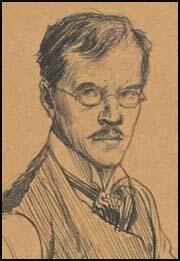
Herbert Cole, one of five children of George Cole and Elizabeth Cole was born in Manchester in September 1867. (1) In 1871, 3 year-old Herbert was living with his parents and three siblings at 42 Rockley Street, Pendleton, Salford. On the 1871 Census return, Herbert's father, is described as a 35-year-old "Teacher" at the local National School. (2)
By the time the 1881 Census was taken, George Cole was employed as an "Income Tax Collector" and the Cole family were living at 150 Broughton Road, Pendleton. The eldest child, 21-year-old Elsie Sophia Cole was working as a "Postal Telegraph Clerk" and 19-year old George William Cole was employed as a "Mercantile Clerk". Thirteen-year-old Herbert Cole and his two younger siblings, Edith and Philip were still at school. (3)
In 1887 Herbert Cole attended Manchester Art School. A fellow student was Sylvia Pankhurst who later recalled she enjoyed the avant-garde atmosphere of art college and "when absorbed in the work I knew the greatest happiness." (4) In 1891, wenty-three year-old Herbert Cole was recorded on the census return as a "Designer of Stained Glass Windows". (5)
Herbert Cole and Socialism
Herbert Cole, who was a member of the Socialist League and produced drawings for its newspaper, Commonweal. (6) His art and politics were deeply influenced by socialist artists such as William Morris, Walter Crane, John Everett Millais, William Holman Hunt, Dante Gabriel Rossetti and Frederick Shields. (7)
Herbert Cole met Clara Gilbert, the daughter of a boot manufacturer who was left as an orphan at an early age and worked as a postal worker in Manchester. On 1st October 1898, at St Mark's Church, Cheetham Hill, Manchester, Clara Gilbert, aged 29 year-old, married 31 year-old artist Herbert Cole. The marriage was witnessed by Clara's younger brother, Roland Gilbert, and her youngest surviving sister, Emily Gilbert. (8)
Art Teacher and Illustrator
The married couple moved to London and lived at 111 Warner Road, Walthamstow, Essex. Herbert found work as a teacher at Camberwell School of Art. He also provided illustrations for the Pall Mall Magazine and books such as Gulliver's Travels, The Ingoldsby Legends, The Ancient Mariner and Froissart Chronicles. According to Sylvia Pankhurst: These brought great profit to his publishers, but to himself only a modest outright payment for each set of drawings, and no further benefit from the huge circulations his work achieved. He remained the most unassuming and kindly of the devotees of art, eking out the modest sums made by his rapid craftsmanship in teaching at the Camberwell School of Art, where he gathered round him an ever-growing band of affectionate students." (9)
In 1901 Herbert Cole, his wife, Clara, and their young son, Philip (aged 1 year, 2 months) were residing at 403 Ivydale Road, Camberwell, Peckham, Surrey. Later they moved to 1 Yew Tree Cottages, Eynsford, Kent. By 1911 they employed a 16 year-old maidservant named Frances Annie Price. Also living in the house was the opera singer, Hilda Phoebe Travis (1879-1935) who performed on the stage under her maiden name, (10)
Herbert and Clara Cole were both supporters of women's suffrage. Clara joined the Women Social & Political Union and Herbert supplied drawings for its newspaper, The Suffragette. including a front-cover on 20th March, 1914. He also provided art work for the Women's Dreadnought. (11)
First World War
During the First World War, Herbert and Clara Cole were both active in the peace movement and feared the introduction of conscription. (12) On the outbreak of war in July, 1914, they placed advertisements in The Labour Leader about the formation of "League Against War and Conscription" and appealed for people to join a "united protest in case Conscription is thrust upon us." (13)
In November, 1914, Fenner Brockway and Lilla Brockway established the No Conscription Fellowship (NCF). Herbert and Clara were amongst the 150 people who joined the organisation in the first six days. (14) Clifford Allen, the manager of the first Labour Party daily newspaper, the Daily Citizen, and the author of the pamphlet, Is Germany Right and England Wrong? (1914) where he argued against Britain becoming involved in an European war, became Chairman of the NCF. "We have got to face the only possible outcome of our Socialist faith - I mean the question of non-resistance to armed force. Don't let us deceive ourselves. The sacredness of human life is the mainspring of all our propaganda. In my opinion there can be no two kinds of murder." (15)
Clara Gilbert Cole later recalled: "On 11th July 1915, Sunday, I went into Trafalgar Square with a linen placard bearing the words: 'Men and Women of England, Arbitration finally settles all wars. If at the end of a war, why not at the beginning? If not at the beginning why not now? Demand terms of settlement from our Government as the German people are doing.' ... Police did not interfere, but public was hostile and bloodthirsty in its remarks, wished to kill every Prussian, some said even women and children. The British soldiers did not make these remarks, though there were many about." (16)
Herbert Cole provided anti-war cartoons for the Worker's Dreadnought. Cole became upset when Arthur Winnington-Ingram, the Bishop of London, who gave sermons considered by many verging on xenophobia. H. H. Asquith, the Prime Minister, described his language as "jingoism of the shallowest kind". (17) Cole caused a terrible stir on 25th August 1916, when Cole produced a cartoon of "the Bishop of London, embracing a gun, and Christ being led away as a conscientious objector by a policeman and a soldier." (18)
Russian Revolution
Herbert Cole welcomed the Russian Revolution. In The Workers' Dreadnought he reviewed H. G. Wells book Russia in the Shadows (1921). "The great revolution in Russia had a very disturbing effect on the minds of many; so startling an upheaval has been too strong for certain types of advanced thinkers, and their mentality has received a staggering blow from the sheer unexpectedness of events and the bravery and audacity with which they have been tackled by the Bolshevik Government. Mr Wells the prophet falls out occasionally with Mr Wells the journalist. If the Russian Revolution continues to be a success, or if it finally turns out to be a failure, he will be able to say. "I told you so," by referring to different people in the book… After all this we are told what wonderful things these Marxist Communists have done, and we are doing, in creative planning and intelligent reconstruction. Space forbids further quotation, but if carefully read the book will be found to be, in spite of its pages of feeble criticism, a remarkable tribute to the triumph of the Social Revolution, the truth of Marx's prophecies and the immense abilities of the Bolsheviki. Long live the Russian Revolution and its noble humanitarian ideals." (19)
Henry and Clara Cole became involved in the early unemployed movement in the 1920s that was under the control of the Communist Party of Great Britain (CPGB). Clara Gilbert Cole along with William Rust of the Communist Party of Great Britain formed the group Camberwell Organized Unemployed. In January 1921, people living in cottages in Ormside Street, Camberwell, were evicted by a local businessman. A group of people, headed by Cole and Rust, attempted to "reinstate" these evicted people. (20)
Cole and Rust were arrested and on 11th July, appeared in court. Cole published her account in the Women’s Dreadnought: "The case lasted nearly all day, not in the interests of justice – it was merely a pretense – but in order that the law might be able to boast it allowed Dallas and Rust to call witnesses. The evidence of these same witnesses was entirely ignored in the summing up. The sentence was a foregone conclusion. I had long since ceased to expect anything but injustice in the Courts. Property is far, far more sacred than life." Cole was sent to prison for 28 days. (21)
In June, 1923, Herbert Cole complained to The Daily Herald about a cartoon by Max Beerbohm: "I should like to know the reason for the publication of the disgusting libel on Russia and Communist Sunday Schools in the shape of Max Beerbohm's cartoon, which appears in your issue of today. If the artist had depicted a British day school or Sunday School teacher inculcating the militarism, bloodshed and British Empire jingoism still taught in our schools after the greatest war in history, and the unemployment and starvation resulting there from there would have been some truth in it. I have read in your columns accounts of unemployed men falling down dead from starvation while waiting for their doles, reports of ten to twenty people crowded into two rooms, and of hunger in the mining districts, but I have yet to learn that Communist Sunday Schools have in any way advocated bloodshed to produce starvation." (22)
Herbert Cole remained close to those who had protested against the First World War. In 1925 Herbert Cole produced a portrait in chalk of Sylvia Pankhurst that is now in the National Portrait Gallery. (23)
Herbert Cole died at 21 Gwendwr Road, West Kensington, London, on 12th September 1931, at the age of 64. The National Probate Calendar (Index of Wills) recorded that Herbert Cole left effects valued at £16 5s. (24) After his death Clara Gilbert Cole presented some of his work to the Victoria & Albert Museum and the British Museum. (25)
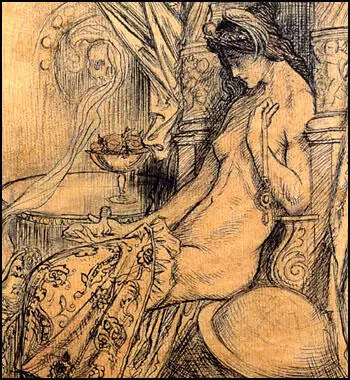
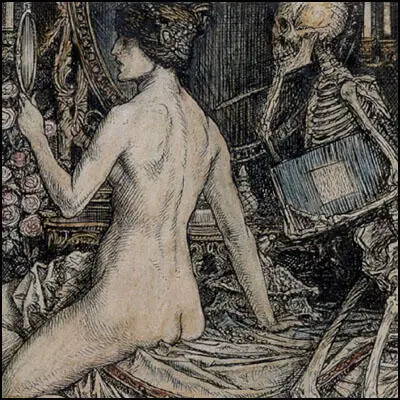
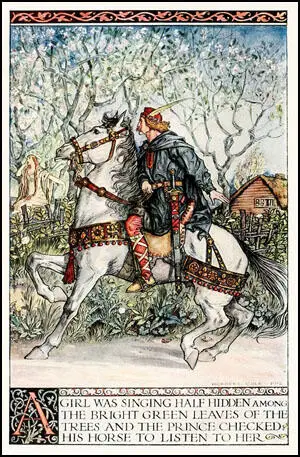
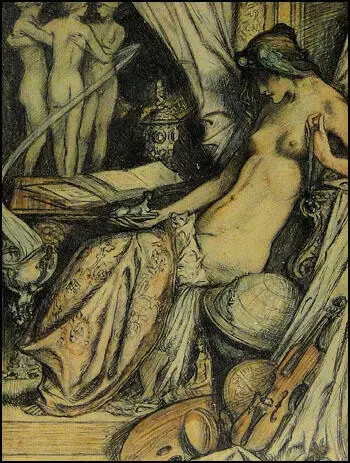
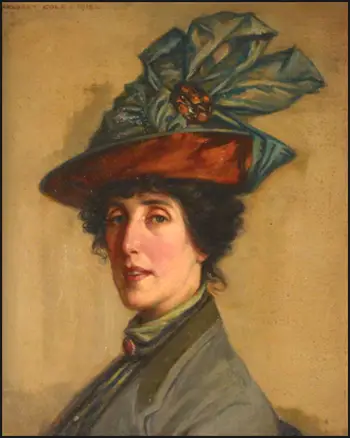
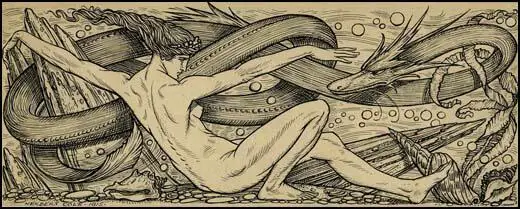
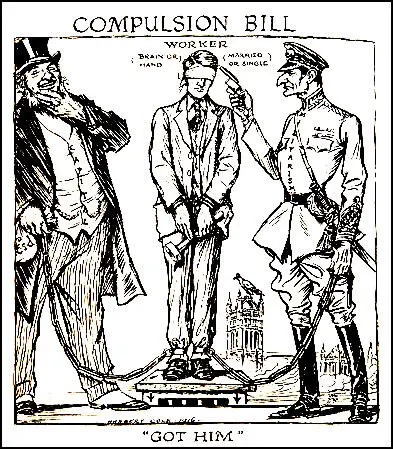
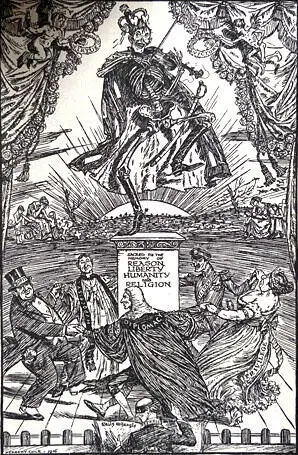
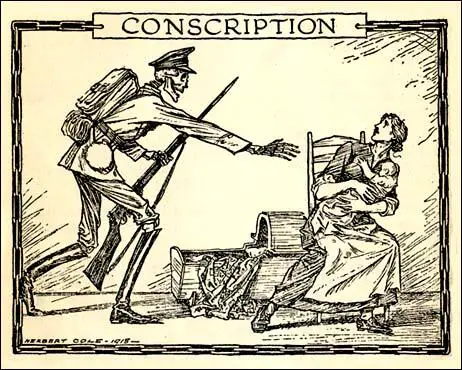
Primary Sources
(1) The Workers' Dreadnought (7th September, 1918)
Mr Herbert Cole has generously given us the plates of Walter Crane's First of May, which was one of his school prizes years ago. Will some generous friends provide frames for them? Herbert Cole has also given some of his own original works to sell… These include The Enchantress and The Gift, lithographs drawn on the stone by Cole himself. Nerield and the Sea Serpent a pen drawing tinted in water-colour, a line drawing, The Pale Cow, to illustrate an Irish story: The Mirror, a chalk drawing tinted in water-colour, and a chalk drawing, slightly tinted to illustrate Zangwill's Grandchildren of the Ghetto. We should be glad to receive offers for these charming drawings which will, of course, fall to the fortunate highest bidder!
(2) The Workers' Dreadnought (10th March, 1921)
An attractive feature of the paper has been its cartoons by Herbert Cole… On August 25 th 1916 the Dreadnought contained a cartoon by Herbert Cole, of the Bishop of London embracing a gun, and Christ being led away as a conscientious objector by a policeman and a soldier.
(3) Herbert Cole, The Workers' Dreadnought (16th April 1921)
The great revolution in Russia had a very disturbing effect on the minds of many; so startling an upheaval has been too strong for certain types of advanced thinkers, and their mentality has received a staggering blow from the sheer unexpectedness of events and the bravery and audacity with which they have been tackled by the Bolshevik Government.
Mr Wells the prophet falls out occasionally with Mr Wells the journalist. If the Russian Revolution continues to be a success, or if it finally turns out to be a failure, he will be able to say. "I told you so," by referring to different people in the book…
After all this we are told what wonderful things these Marxist Communists have done, and we are doing, in creative planning and intelligent reconstruction. Space forbids further quotation, but if carefully read the book will be found to be, in spite of its pages of feeble criticism, a remarkable tribute to the triumph of the Social Revolution, the truth of Marx's prophecies and the immense abilities of the Bolsheviki. Long live the Russian Revolution and its noble humanitarian ideals.
(4) Herbert Cole, The Daily Herald (9th June 1923)
After having read your sympathetic references to Russia in the Daily Herald during the past month. I should like to know the reason for the publication of the disgusting libel on Russia and Communist Sunday Schools in the shape of Max Beerbohm's cartoon, which appears in your issue of today.
If the artist had depicted a British day school or Sunday School teacher inculcating the militarism, bloodshed and British Empire jingoism still taught in our schools after the greatest war in history, and the unemployment and starvation resulting there from there would have been some truth in it.
I have read in your columns accounts of unemployed men falling down dead from starvation while waiting for their doles, reports of ten to twenty people crowded into two rooms, and of hunger in the mining districts, but I have yet to learn that Communist Sunday Schools have in any way advocated bloodshed to produce starvation.
(5) Sylvia Pankhurst, The Home Front: A Mirror to Life in England during the World War (1932)
Clara Gilbert Cole was the daughter of a boot manufacturer who many years before had suffered business misfortunes through unwillingness to adapt herself to the harsh conditions of modern commerce, and from refusal to produce anything save honest, hand-made all-leather wares. Left an orphan without means, she had become a postal servant in Manchester and met there Herbert Cole. He was a student of the Manchester Municipal School of Art, then, as always, a cheerful centre of the cult of beauty in the dark ugliness of Cottonopolis. Like many other students of his day, Cole was deeply influenced by Walter Crane, then Principal of the Manchester School, as well as by the other Pre-Raphaelites, William Morris, Rossetti, Holman Hunt and Frederick Shields, the Manchester artist, then in the height of their artistic powers. The two young people drank inspiration from the same fount. Clara Gilbert, with her unusual slender loveliness, her deft fingers and vivid imagination, was like a caged bird in the post office. Herbert Cole had been taken up by a Manchester builder, and was painting saints and angels on church walls and making cartoons for stained glass, but his ambition was to illustrate books.
He (Herbert Cole) was at once employed on the Pall Mall Magazine, and after, in steady succession on illustrations which became famous, for Gulliver's Travels, The Ingoldsby Legends, The Ancient Mariner, Froissart Chronicles, Fairy Gold, and a host of others. These brought great profit to his publishers, but to himself only a modest outright payment for each set of drawings, and no further benefit from the huge circulations his work achieved. He remained the most unassuming and kindly of the devotees of art, eking out the modest sums made by his rapid craftsmanship in teaching at the Camberwell School of Art, where he gathered round him an ever-growing band of affectionate students; whilst Clara still did the work of their simple household, wrote poems, and filled her mind with social causes. They had a talented son, Philip, with a passion for architecture.
(6) Victoria and Albert Collections, Herbert Cole (2023)
Herbert Cole (1867-1930) like Sylvia Pankhurst, studied at Manchester School of Art and was heavily influenced by the Pre-Raphaelites, William Morris and illustrators like Walter Crane who had volunteered their work for papers like the Socialist League's 'Commonweal'. He married the anarchist and anti-militarist Clara Gilbert. Both Clara and Herbert seem to have been involved in suffragism, Herbert becoming the staff artist for the Women’s Social and Political Union (WSPU) later progressing to provide illustrations for 'The Worker’s Dreadnought'. He was a prolific artist from the 1890s into the 1920s. His work included that as an illustrator for children’s books and a designer.
(7) Elizabeth Crawford, Art and Suffrage: A Biographical Dictionary of Suffrage Artists (2018)
Herbert Cole 1867-1930), illustrator, born in Manchester, one of the five children of George Cole, a school teacher, later tax collector, and his wife Elizabeth. From 1887 he attended the Manchester School of Art and then worked as an illustrator, his style much influenced by pre-Raphaelites such as Burne-Jones and Walter Crane. He moved to the London area by the time he married in 1898 and taught costume illustration at the Camberwell School of Art.
(8) Peace Pledge Union, Clara Gilbert Cole (2023)
Clara Gilbert was born on 4th December 1868, the daughter of a boot manufacturer who got into financial difficulties because he refused to produce anything shoddy. She was left an orphan with no means, and became a postal worker in Manchester, where she met her husband, the artist Herbert Cole, and became Clara Gilbert Cole on her marriage. They were both closely involved with the suffragist movement, and Clara’s work and campaigning is mentioned by Sylvia Pankhurst in her book, The Home Front....
After her marriage, they moved to London where Herbert developed his career with book illustrations and teaching art at Camberwell School of Art. Clara brought up their son Philip, later a talented architect, wrote poems and "filled her mind with social causes." They were stunned by the onset of the war.
When conscription was introduced in 1916 Clara Gilbert Cole went to Trafalgar Square with a badge saying Stop the War, and a banner against conscription. She was arrested and brought to court though the charge was dropped - even though she returned to demonstrate many times.
(9) David Simkin, Family History Research (16th February, 2023)
Clara Gilbert Herbert Cole was born in Pendleton, near Salford, Lancashire, in 1867, the third child of Elizabeth Halling and George Cole, a schoolmaster who later became a tax collector.
Herbert Cole was baptised at St. George's Chapelry, Charlestown, Salford, Lancashire, on 25th September 1867. Both of Herbert's parents - George Cole (born c. 1836) and Elizabeth Halling (born c. 1837) originated from Cheltenham, Gloucestershire, and they married in that town in 1858. This union produced 5 children - Elsie Sophia (born 1859, Haverford West, Pembrokeshire, Wales), George William (born 1862, Pendleton, Lancashire), Herbert (born 1867, Pendleton, Lancashire), Edith Alice (born 1869, Pendleton, Lancashire) and Philip Arnold (born 1872, Pendleton, Lancashire).
At the time of the 1871 Census, 3 year-old Herbert was living with his parents and three siblings at 42 Rockley Street, Pendleton, Salford, Lancashire. On the 1871 Census return, George Cole, Herbert's father, is described as a 35-year-old "Teacher" at the local National School (later known as Pendleton and Mearley Church of England School). By the time the 1881 Census was taken, George Cole was employed as an "Income Tax Collector" and the Cole family were living at 150 Broughton Road, Pendleton, Salford, Lancashire. The eldest child, 21-year-old Elsie Sophia Cole was working as a "Postal Telegraph Clerk" and 19-year old George William Cole was employed as a "Mercantile Clerk". Thirteen-year-old Herbert Cole and his two younger siblings, Edith and Philip were still at school.
Ten years later, in 1891, the Cole Family were still residing at 150 Broughton Road, Pendleton. According to the 1891 Census, 55-year-old George Cole was still employed as a "Collector of Government Taxes". Twenty-three year-old Herbert Cole is recorded on the census return as a "Designer of Stained Glass Windows". Both of Herbert's sisters, 31 year-old Elsie and 21 Year-old Edith, were each described as working as a "Postal Telegraph Clerk". Philip Arnold Cole, aged 19, the youngest son, was earning his living as a "Machine Tool Maker". George William Cole, the eldest son, an accountant by profession, was now married with two children and living at his mother-in-law's house a few doors away at 156 Broughton Road.
On 1st October 1898, at St Mark's Church, Cheetham Hill, Manchester, Herbert Cole, described on the marriage register as a 31 year-old "Artist", married Clara Gilbert, a 29 year-old "Telegraphist". Clara Gilbert, Herbert's bride, was the daughter of Mary Jane and Josiah Gilbert, a boot and shoe manufacturer from Nantwich, Cheshire, but at the timeof her marriage both parents had been dead for over 15 years.
When Herbert Cole married Clara Gilbert in October 1898, he was living at 111 Warner Road, Walthamstow, Essex. Early in 1900, in Walthamstow, Mrs Clara Cole gave birth to the couple's only child, a son named Philip Cole.
By the time the 1901 Census was taken, Herbert Cole, his wife, Clara, and their young son, Philip (aged 1 year, 2 months) were residing at 403 Ivydale Road, Camberwell, Peckham, Surrey. Thirty-three year-old Herbert Cole is described on the census return as an "Artist (Book Illustrator)". No occupation is given for Mrs Clara Cole, Herbert's wife.
When the 1911 Census was carried out the Cole family were living at 1 Yew Tree Cottages, Eynsford, Kent. On the census return, 43 year-old Herbert Cole is recorded as "Artist (Book Illustration, Evening teacher of illustration & drawing for London County Council and Camberwell School of Art). Making up the household at Yew Tree Cottages was Herbert Cole's 42 year-old wife, Clara, their 11 year-old son, Philip, and a 16 year-old maidservant named Frances Annie Price. At the time of the 1911 census, Herbert and Clara Cole had a visitor, Mrs Hilda Phoebe Travis,
a 27 year-old "Opera Singer" who performed on the stage under her maiden name, Miss Hilda Cross. Mrs Travis/Hilda Cross was a soprano who appeared in Gilbert & Sullivan productions at the D'Oyly Carte Principal Repertory Opera Company from July 1910 to December 1914.Herbert Cole died at 21 Gwendwr Road, West Kensington, London, on 12th September 1931, at the age of 64. The National Probate Calendar (Index of Wills) recorded that Herbert Cole left effects valued at £16 5s.
References
(1) David Simkin, Family History Research (16th February, 2023)
(2) Census Data (1881)
(3) Census Data (1891)
(4) Sylvia Pankhurst, The Suffragette Movement: An Immediate Accountof Persons and Ideals (1977) page 155
(5) Census Data (1891)
(6) Victoria and Albert Collections, Herbert Cole (2023)
(7) Sylvia Pankhurst, The Home Front: A Mirror to Life in England during the World War (1932) page 330
(8) David Simkin, Family History Research (16th February, 2023)
(9) Sylvia Pankhurst, The Home Front: A Mirror to Life in England during the World War (1932) page 330
(10) Census Data (1901)
(11) Elizabeth Crawford, Art and Suffrage: A Biographical Dictionary of Suffrage Artists (2018) page 60
(12) Peace Pledge Union, Clara Gilbert Cole (2023)
(13) Sylvia Pankhurst, The Home Front: A Mirror to Life in England during the World War (1932) page 260
(14) John William Graham, Conscription and Conscience (1922) pages 172-173
(15) Clifford Allen, Is Germany Right and England Wrong? (1914)
(16) Clara Gilbert Cole, The Objectors to Conscription and War (1936)
(17) Alan Wilkinson, The Church of England and the First World War (1978) page 70
(18) The Workers' Dreadnought (10th March, 1921)
(19) Herbert Cole, The Workers' Dreadnought (16th April 1921)
(20) John Hewetson, Freedom (11th February, 1956)
(21) Clara Gilbert Cole, Women’s Dreadnought (22nd July 1922)
(22) Herbert Cole, The Daily Herald (9th June 1923)
(23) Elizabeth Crawford, Art and Suffrage: A Biographical Dictionary of Suffrage Artists (2018) page 60
(24) David Simkin, Family History Research (16th February, 2023)
(25) British Museum Collection (2023)

